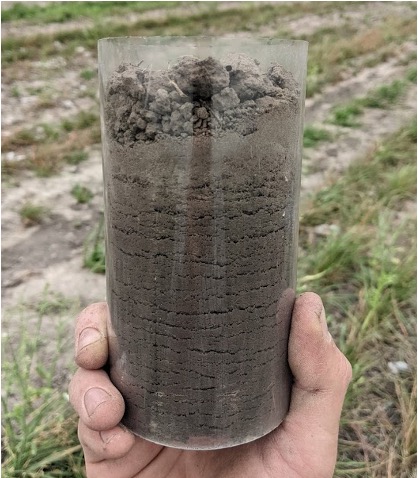
Thanks to a new research study by the Soil Heath Institute, new insights are emerging into the vital role that soil organic carbon levels can play in improving soil health and helping crops fight drought.
The publication includes the development of new pedotransfer function equations, available for use by other researchers, that enable more precise measurement of the correlation between carbon levels, water retention and various soil types. The new equations will allow scientists to better predict how much water farmers can provide to their crops through soil health – specifically, by raising their soil carbon.
Healthy soil that is rich in carbon acts like a sponge to soak up rainfall and store it for crops. While farmers have known this for a long time, it has been hard for scientists to predict how much extra water farmers can expect when they use regenerative agriculture practices that improve soil carbon. This is important because many farmers consider water management to be the biggest reason to adopt soil health management practices like no-till or cover crops.
“A positive, causal relationship between soil organic carbon and plant water-holding capacity has a direct benefit by increasing crops’ resistance to drought,” said Dianna Bagnall, a soil research scientist with SHI and lead author of the study.
Past soil science experiments have found mixed results when studying how much water soil can provide to farmer’s crops when soil carbon increases. Some studies show lots of extra water and others show very little. Now, new data collected by the Soil Health Institute gives a clear answer – fighting climate change by building soil carbon also gives farmers more water to grow crops. The new equations show as much as three times the water estimated in earlier work. Important reasons that the new equations predict more available water for crops are that the Soil Health Institute’s data was more comprehensive than other studies, covering many different soil management practices at 124 replicated experiments across North America; and this study used preserved soil structure, rather than soils that had been run through a sieve. Another piece of the puzzle was knowing whether soils had large amounts of calcium carbonate in them.
“Our findings showed an increase in water-holding capacities for non-calcareous soils (those lacking calcium carbonate) resulting from soil organic carbon that was more than double that of earlier studies,” Bagnall said. “This is an exciting development, since it provides a concrete incentive for farmers to adopt more responsible soil management practices that will positively impact their productivity and profitability.”
The Institute is currently working on a decision support tool and with the U.S. Department of Agriculture’s Natural Resources Conservation Service to get this information into the hands of farmers, their advisers, and conservation planners. The new equations are freely available and can also be used by other scientists to model how soils can offset carbon emissions and make agriculture more drought resistant.
Read the peer-reviewed manuscript here: https://acsess.onlinelibrary.wiley.com/doi/abs/10.1002/saj2.20395